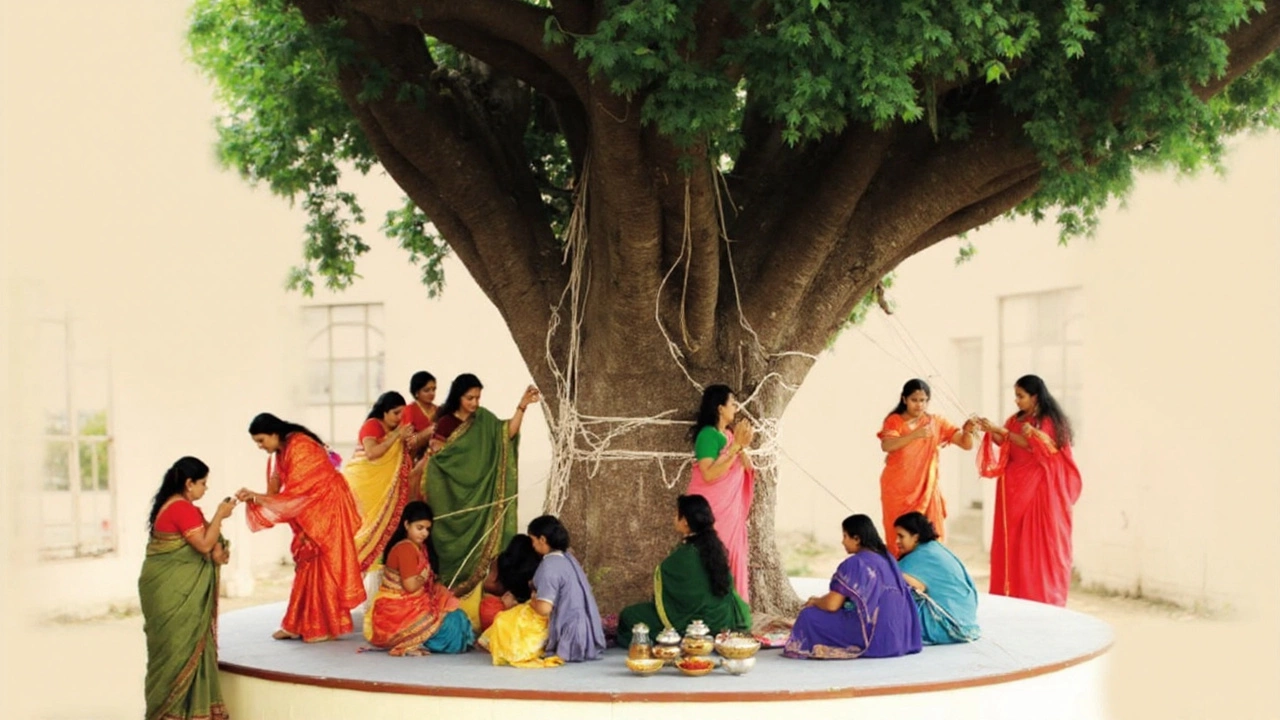Banyan Tree: What Makes This Giant So Amazing
Ever walked under a massive canopy of aerial roots and wondered how a single tree can cover an entire yard? That's the banyan tree, a plant that literally spreads its own little trunks from its branches. It starts as a regular seed, but once the sapling reaches a certain height, it sends down long aerial roots that thicken into secondary trunks. Those new trunks let the tree occupy more ground without needing a wider root system underground.
Native to India and Southeast Asia, the banyan belongs to the fig family. Its scientific name is Ficus benghalensis. The tree’s fruit is a small fig that birds love, helping spread its seeds far and wide. In the wild, a single banyan can cover up to 1,000 square meters, turning a small patch of forest into a sprawling shade canopy.
How Banyan Trees Grow
The secret to its size is the aerial roots. When a branch touches the soil, a root grows down, thickens, and becomes a new trunk. This process repeats over and over, creating a network of trunks that look like a forest of one tree. Because each new trunk gets its own root ball, the banyan can survive damage to any single part of the plant.
Growth is fast once the aerial roots start working. In just a few years, you can see multiple trunks sprouting. The tree also keeps producing new branches, so the canopy keeps expanding outward. This relentless growth is why banyans are often used as meeting spots in villages – they provide shade, shelter, and a natural gathering place.
Caring for a Banyan Tree at Home
If you want a banyan in your garden, pick a spot with plenty of sun and room to spread. The soil should be well‑draining but keep it moist during the first year. Plant the sapling deep enough so the roots are covered, and add a layer of mulch to retain moisture.
Water regularly but avoid water‑logging; too much can rot the roots. Fertilize once a month with a balanced organic mix during the growing season. As the tree starts sending down aerial roots, you can guide them into the soil by gently bending them down and covering the tip.
Prune any dead or weak branches to keep the shape tidy and improve air flow. If a new aerial root starts growing away from where you want it, you can cut it back, but don’t remove too many – they’re the tree’s way of staying stable.
One practical tip: use a sturdy stake early on to support the main trunk. As the tree gets heavier, the stake will help prevent it from tipping over, especially in windy areas.
Besides shade, banyan trees offer several benefits. The figs feed birds and small mammals, boosting local biodiversity. The extensive root system helps prevent soil erosion, making the tree a natural guard for hilly terrain. In traditional Indian culture, the banyan symbolizes immortality and is often planted at temples and schools.
People also use banyan leaves for medicinal teas and root bark for treating minor ailments. The wood, though soft, can be carved into simple furniture or decorative items.
One fun fact: the famous Great Banyan in Howrah, India, is over 250 years old and has more than 3,000 trunks. It’s a living reminder of how a single seed can become a massive, multi‑trunked wonder.
So whether you’re looking for a shade tree, a conversation starter, or a piece of living history, the banyan tree delivers on all fronts. Plant one, watch it grow, and enjoy the ever‑changing canopy that becomes the heart of your backyard.
